In an age where urbanization frequently enough takes precedence and technology intertwines with daily life, the call of the countryside has never been more inviting. The farmhouse kitchen, with its rustic charm and hearty warmth, serves as the heart of the home—a haven for culinary creativity and family gatherings. But what if this beloved space could take on a new life, bathed not only in the glow of sunlight streaming through the window but also in the vibrant hues of nature? “” invites you to explore the seamless integration of plants into your kitchen surroundings. From flourishing herbs that elevate your culinary creations to cascading greenery that softens the edges of rustic decor, we’ll delve into the ways you can breathe life into your kitchen. As we embark on this journey, prepare to discover the beauty, functionality, and tranquility that plants bring, turning your farmhouse kitchen into a sanctuary that nurtures both the body and soul.
Embracing the Serenity of Indoor Gardens in Your Farmhouse Kitchen
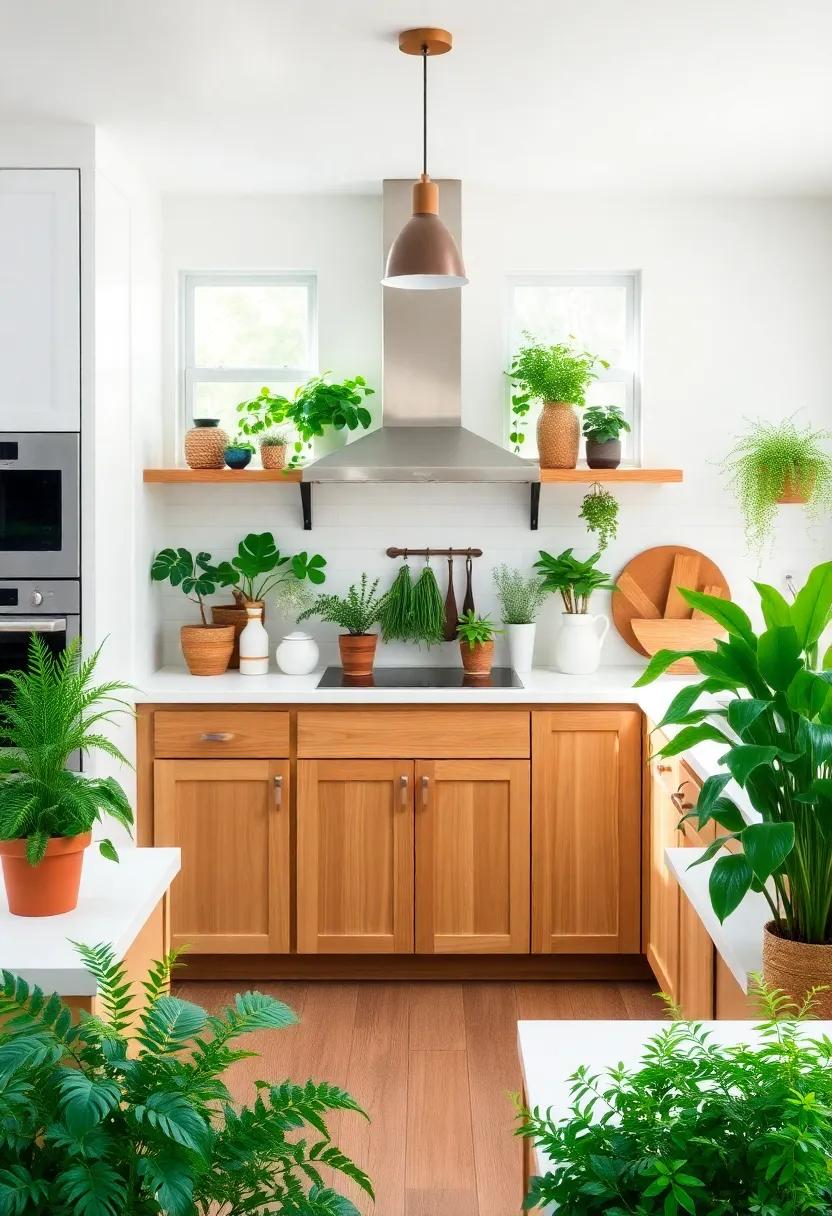
Incorporating an indoor garden into your farmhouse kitchen creates a serene atmosphere that fosters creativity and wellbeing.Imagine waking up to the gentle warmth of sunlight streaming in through your windows, highlighting the lush greenery that surrounds you. Herbs like basil, rosemary, and mint can be planted in rustic pots, adding not only beauty but also flavor to your culinary creations. Manny homeowners find that having these vibrant plants within reach invigorates their cooking and transforms everyday meals into delightful experiences.
The visual appeal of greenery isn’t the only benefit; indoor gardens also purify the air and enhance the overall ambiance of the kitchen. Consider implementing a vertical garden along an empty wall, or hang small pots from the ceiling to create a cascading effect. Key benefits of adding indoor gardens include:
- Improved air quality
- Natural humidity regulation
- Aesthetic enhancement of the kitchen space
- Access to fresh herbs for cooking
For those looking to explore different types of indoor plants,here’s a quick overview:
| Plant Type | Light Requirement | Care Level |
|---|---|---|
| Basil | Luminous,indirect light | Easy |
| Snake Plant | Low to bright indirect light | very easy |
| Pothos | Low to bright indirect light | Easy |
Starting your own indoor garden is not only rewarding but also an opportunity to reconnect with nature. Explore resources like Family Handyman for tips on creating your ideal green sanctuary.
The Allure of Culinary Herbs for Flavor and Aesthetics
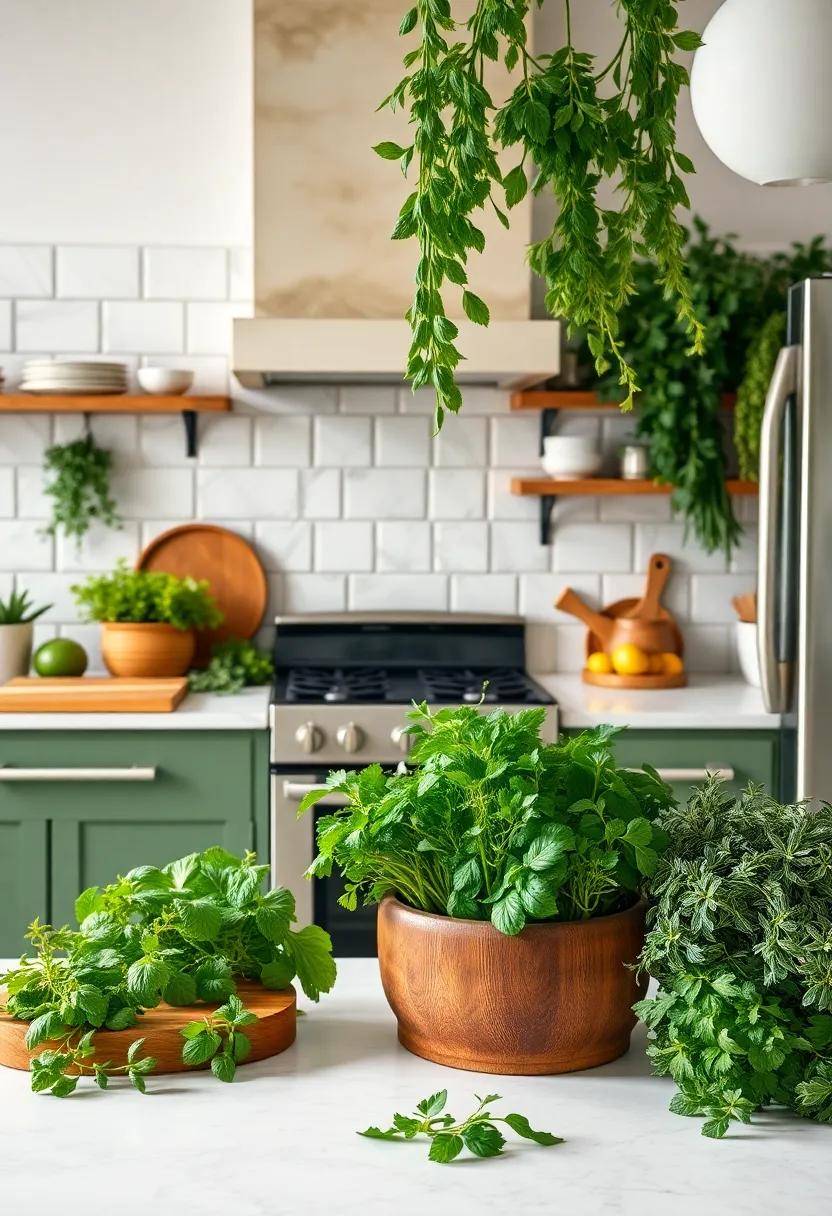
Incorporating culinary herbs into your farmhouse kitchen not only enhances the flavor of your dishes but also elevates the visual appeal of your space. imagine fragrant sprigs of basil,thyme,and rosemary cascading from rustic pots on your windowsill,their rich greens contrasting beautifully with wooden countertops. The allure of these herbs lies in their luscious foliage and delightful aromas, creating a sensory experience that ignites creativity in your cooking.Furthermore, herbs like parsley, cilantro, and mint are not just fresh ingredients; they can also be arranged artistically to serve as stunning centerpieces, offering a tangible connection to nature right inside your home.
To cultivate the perfect herb garden, consider selecting a variety of herbs that not only thrive in your kitchen environment but also complement each other in culinary applications.Here’s a simple guide to help you choose:
| Herb | Flavor Profile | Ideal Pairings |
|---|---|---|
| Basil | Sweet and peppery | Tomatoes, mozzarella |
| Thyme | Earthy and minty | Roasted meats, vegetables |
| Rosemary | Pine-like and fragrant | Lamb, potatoes |
| Cilantro | Citrusy and fresh | Salsas, curries |
With a little care and creativity, your farmhouse kitchen can transform into a vibrant haven for both cooking and aesthetic enjoyment. For tips on maintaining herb gardens and their benefits, you can visit thespruceeats.com.
Creating a Cozy Ambiance with Rustic Greenery accents
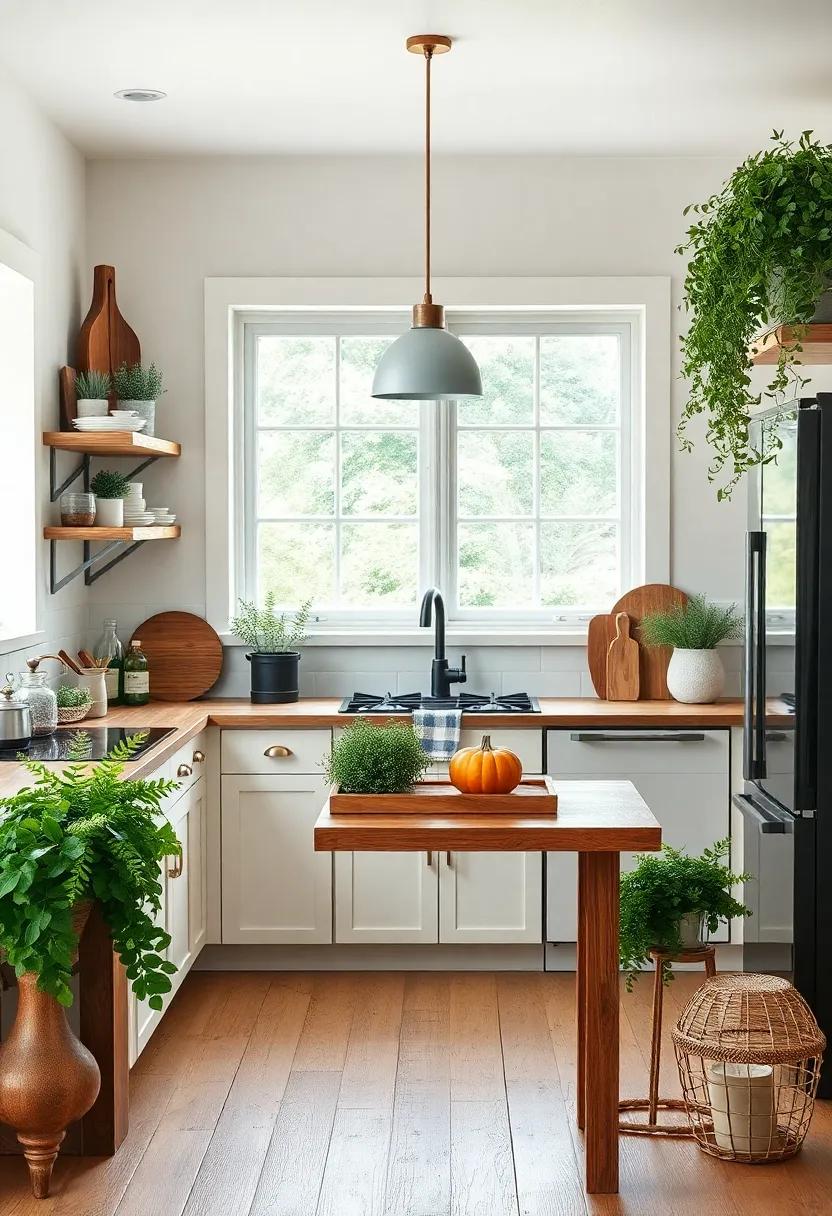
When crafting a serene and inviting atmosphere in your farmhouse kitchen, incorporating rustic greenery is a game-changer.Think about draping trailing plants, such as pothos or string of pearls, from open shelves or hanging pots to add layers of texture and liveliness. Integrating herb planters with basil, rosemary, and thyme not only enhances the décor but also elevates your culinary adventures. This organic touch can be accentuated with earthy pots and weathered wooden crates, further bridging the gap between nature and your kitchen space.
Another effective approach is to create a focal point with bold greenery displays. Place a large statement plant like a fiddle leaf fig or monstera beside a vintage farmhouse sink for a striking contrast against classic fixtures. Consider using a variety of heights and plant types, incorporating succulents or ferns to keep the design excited and varied. You can also create a small table centerpiece with a mix of miniature plants, which can be easily rearranged to switch up the vibe. For more ideas on incorporating greenery into your home décor, visit apartmenttherapy.com.
Incorporating Vertical Gardens for Space Efficiency and Beauty

Vertical gardens, or living walls, are a splendid way to infuse your farmhouse kitchen with nature while maximizing space. By integrating these lush green installations, you not only enhance the aesthetic appeal but also create a unique culinary ambiance. Imagine fresh herbs cascading from the walls, providing both visual delight and easy access to ingredients. Some recommended plants for this purpose include:
- Basil – a staple in many dishes
- mint – perfect for beverages and desserts
- Thyme – adds flavor to savory meals
- Chives – a mild onion flavor
Moreover, the benefits of vertical gardens extend beyond beauty and practicality. They improve indoor air quality and provide insulation, leading to a more enduring kitchen environment. To ensure a successful vertical garden, consider choosing a structure that suits your space, such as a wall-mounted planter or a freestanding unit. Here’s a simple comparison table to help you decide:
| Type of Vertical Garden | benefits | Ideal Space |
|---|---|---|
| Wall-mounted Planter | Space-saving, customizable | Small to medium kitchens |
| Freestanding Unit | Portable, versatile | Large open spaces |
| Hanging Pocket Planters | Lightweight, easy access | Any kitchen style |
Explore more about vertical gardening techniques and how they can elevate your kitchen experience at Gardeners.com.
Brightening Corners with Potted Plants for Natural Light Play
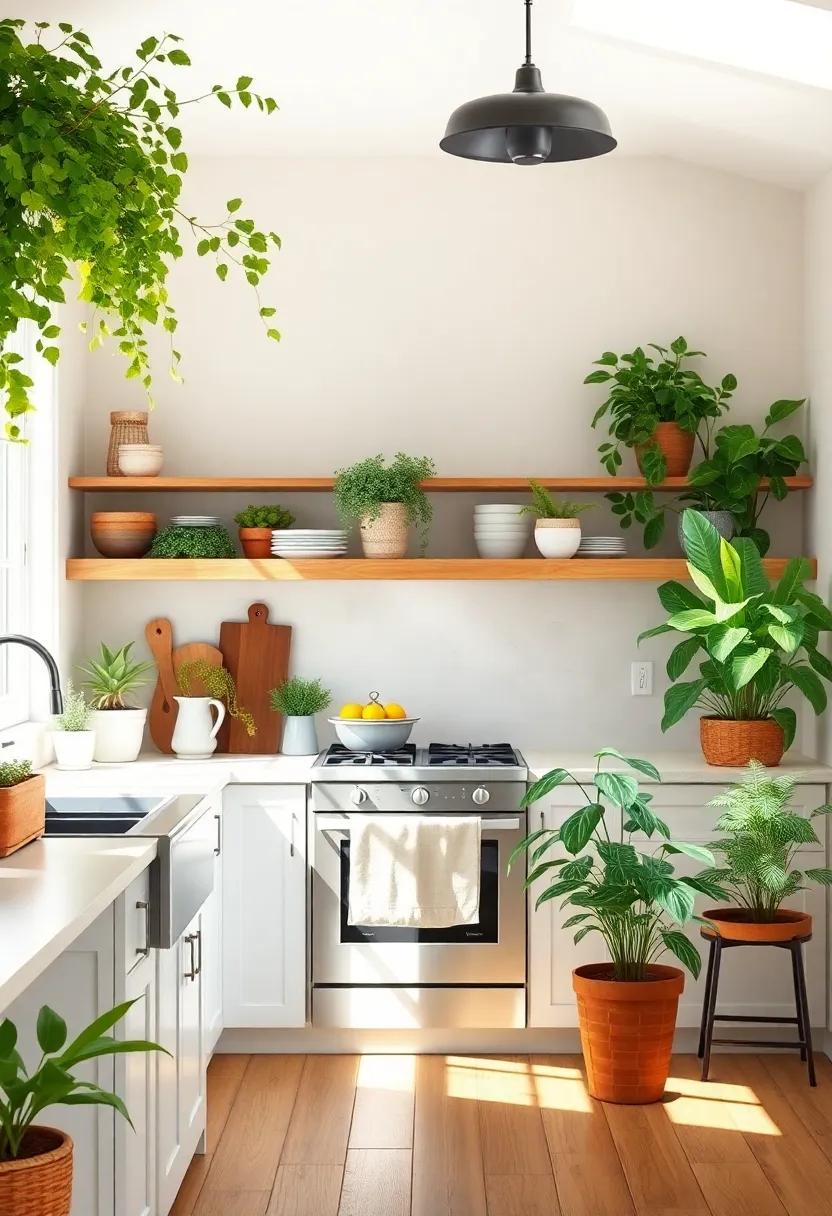
In the heart of a farmhouse kitchen, where rustic charm meets modern living, potted plants can weave a tapestry of natural beauty. Positioning these vibrant greens in corners that bask in gentle sunlight creates a stunning interplay of light and shadows. Ferns, succulents, and herbs can thrive in these spots, transforming neglected areas into vibrant focal points. Their varying textures and colors enhance the kitchen’s aesthetic, making it feel more inviting and alive, while providing fresh, aromatic elements just a reach away. Not only do they liven up the space, but they also contribute to a healthier environment by improving air quality.
To maximize the impact of your potted greenery, consider these tips:
- choose varying heights for an eye-catching arrangement.
- Utilize hanging planters to draw the eye upwards, enhancing vertical space.
- Incorporate self-watering pots to simplify maintenance and ensure your plants thrive.
creating a mini indoor garden not only elevates your kitchen’s aesthetic but also invites the calming essence of nature into your daily life. For more insights on plant care and design, visit better homes & Gardens.
Harvesting Fresh Ingredients Straight from Your Kitchen Garden
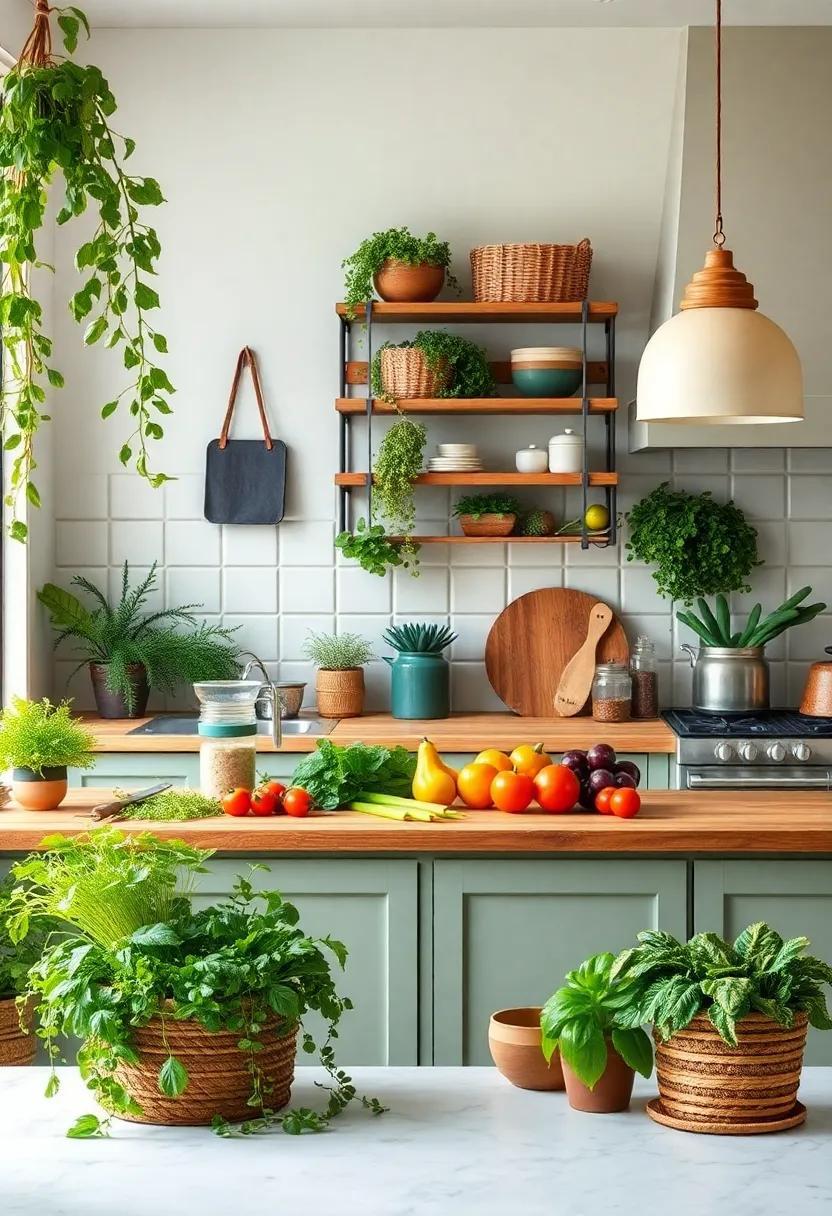
Imagine stepping into your farmhouse kitchen and being greeted by the fragrant aroma of fresh herbs and vibrant vegetables, all harvested just moments ago from your own garden. This direct connection to the earth not only enhances the flavors of your culinary creations but also embodies the essence of farm-to-table cooking.Incorporating fresh produce from your kitchen garden can transform everyday meals into extraordinary experiences, as you elevate your dishes with ingredients that are as fresh as they come. You can cultivate an array of plants to suit your palate, such as:
- Basil: Perfect for salads and pesto.
- Cherry Tomatoes: Great for snacking or adding a pop of color to dishes.
- Spinach: Ideal for smoothies or sautés.
- Thyme: A versatile herb that enhances the flavor of meats and vegetables.
To ensure a flourishing kitchen garden, consider the following fundamental aspects of gardening that can help you yield a bountiful harvest:
| Aspect | Tips |
|---|---|
| Soil Quality | use organic compost to enrich the soil. |
| Watering | Water in the early morning to minimize evaporation. |
| Sunlight | Ensure at least 6 hours of sun for optimal growth. |
| Pest Control | Use natural repellents like neem oil to protect your plants. |
By nurturing your garden with these practices, you’ll not only enjoy the satisfaction of growing your food but also contribute to sustainable living. Discover more about the joy of gardening and how to maximize your kitchen garden experience at Gardeners.com.
Enhancing Your Kitchen With Beautiful Hanging Planters
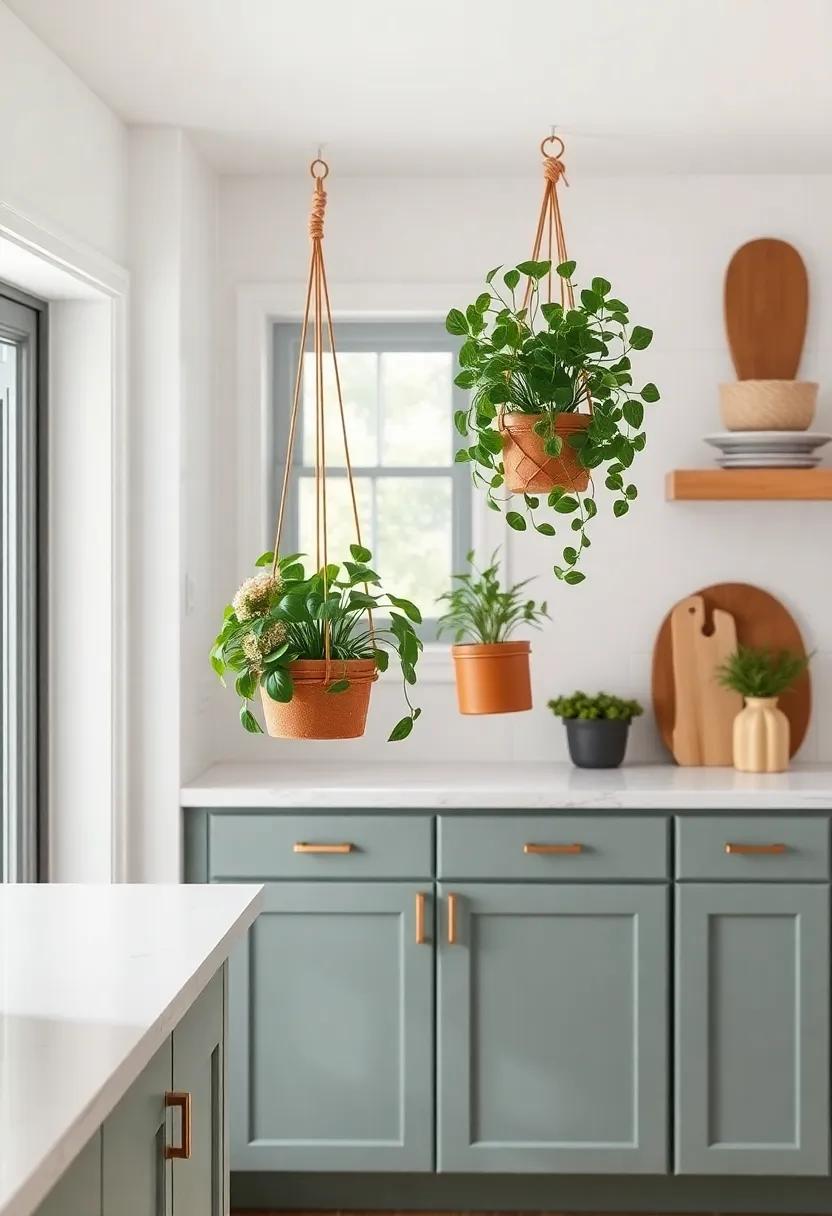
Incorporating hanging planters into your kitchen space not only optimizes limited counter space but also infuses a sense of vitality into your farmhouse aesthetic. Imagine a tapestry of vibrant greenery suspended above your kitchen island or window sills, providing a breathtaking focal point while contributing to the air quality in your home. Opt for materials such as rustic wood, elegant macramé, or sleek metal to complement your kitchen decor. A variety of plants thrive in this setting, including herbs, succulents, and trailing vines, each bringing its unique charm and benefits.
To achieve a harmonious look, consider these tips for your hanging planters:
- Create layers: Vary the heights of your planters to produce a cascading effect.
- Choose pots wisely: Use cohesive colors and textures that match your kitchen style.
- Monitor light: Make sure the plants you select thrive in the light conditions of your space.
Additionally, hanging planters can serve functional purposes. Use larger pots for herbs you frequently cook with,ensuring easy access while adding a pop of color. Embrace the rustic vibe by incorporating materials like jute or burlap, which seamlessly blend with the farmhouse theme. For further inspiration, visit The Spruce, where you can explore innovative ideas for incorporating greenery into your culinary space.
The Role of Succulents in a Contemporary Farmhouse Kitchen
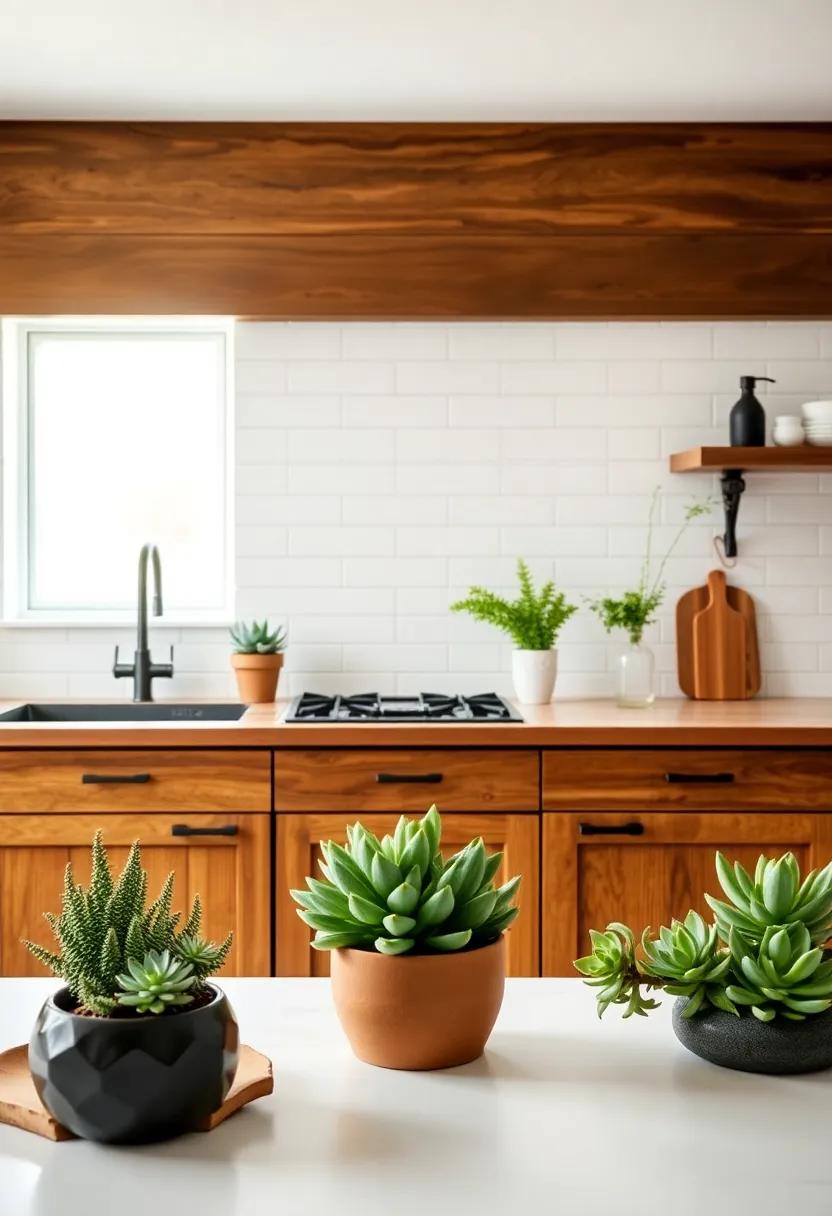
Integrating succulents into a farmhouse kitchen not only elevates the aesthetic appeal but also fosters a sense of tranquility and connection to nature. These resilient plants thrive in diverse conditions, making them perfect for the bustling environment of a kitchen. Their unique forms and colors add a pop of visual interest to countertops, windowsills, and table settings.Consider options like Jade plants, Echeveria, and Hens and Chicks, which come in various shades and sizes, to create an eclectic arrangement that reflects your personal style.
Beyond their striking appearance, succulents are also low-maintenance companions that promote healthier indoor air quality. They effectively filter toxins, ensuring that your kitchen remains a welcoming space. To maximize their benefits,group them together in decorative pots or rustic wooden crates for a cohesive look. For a more curated approach, create a small succulent garden within a glass terrarium, allowing you to showcase these beautiful plants while adding depth to your kitchen décor. Explore more about plant-styling techniques at The Sill.
Using Macrame Plant Hangers to Add a touch of Bohemian Charm
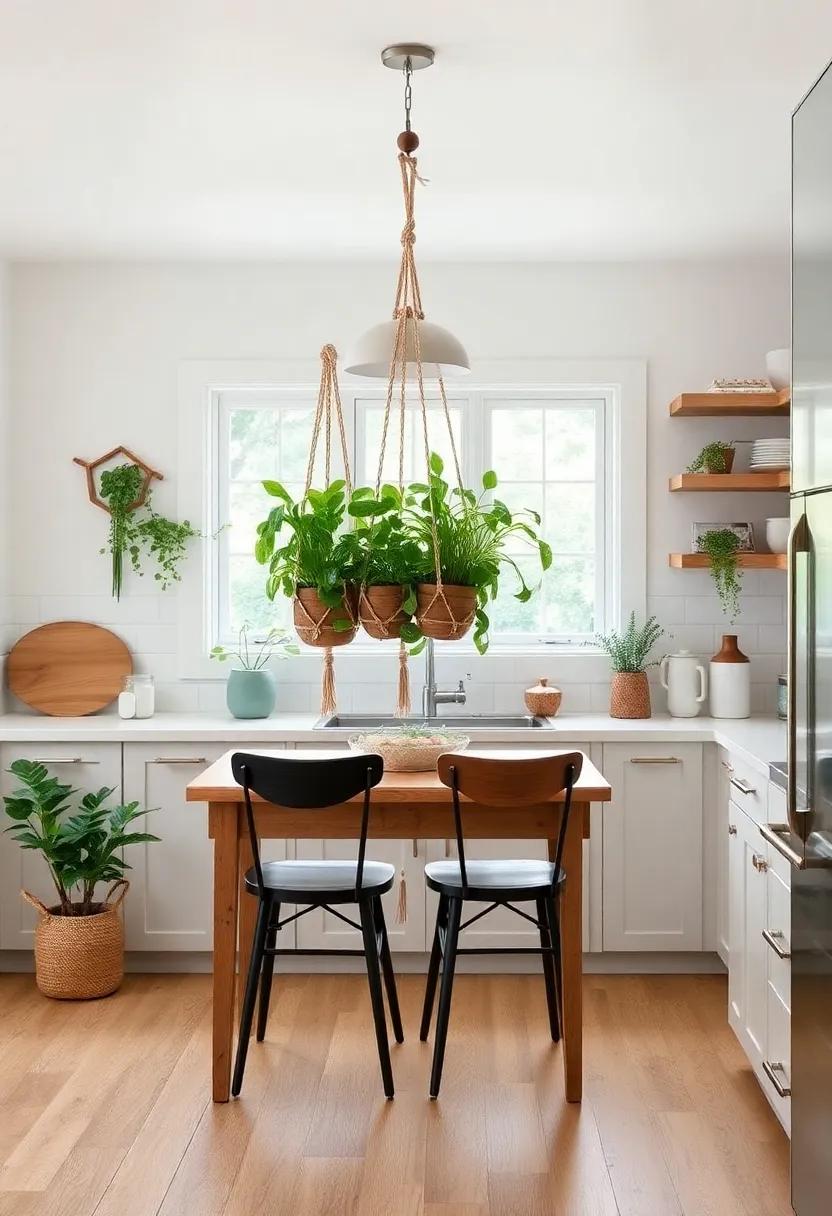
Macrame plant hangers are an effortless way to introduce a touch of bohemian charm into your farmhouse kitchen. These artisanal hangers can transform any indoor space, becoming a focal point that draws the eye upwards and harmonizes beautifully with the rustic elements of farmhouse decor. When styled creatively, they not only serve as functional vessels for greenery but also add texture and visual interest to the room. Consider using a variety of plant species in your hangers—such as cascading pothos, vibrant ferns, or hearty spider plants—to create a lush, layered effect.
To truly embrace the bohemian aesthetic, experiment with different knotting styles and natural fibers for your macrame hangers. Items to consider include:
- Cotton rope for a soft and natural look
- Jute twine for a rustic and earthy vibe
- Colorful yarns to add playful bursts of color
moreover, positioning these lovely creations at various heights can create depth in your kitchen’s decor. To further enhance the ambiance, consider pairing these hangers with unique ceramic pots or handmade planters that reflect your personal style. For inspiration and DIY tutorials, check out madeinaday.com for a variety of creative ideas that will help you design your perfect botanical haven.
Designing a Cozy Breakfast Nook Surrounded by Greenery
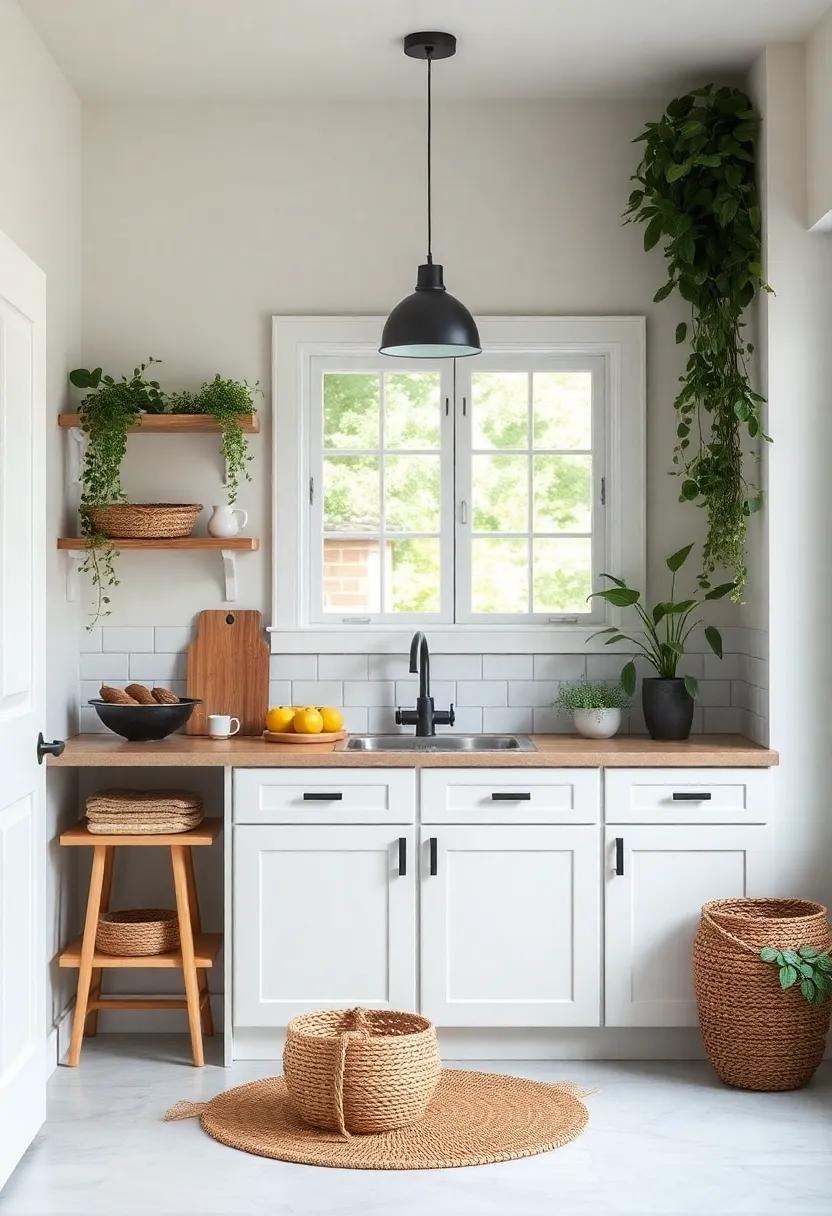
Creating a pleasant breakfast nook in your farmhouse kitchen is all about striking a balance between style and nature. Begin by selecting a quaint round or rectangular table that invites leisurely morning meals and fosters intimate conversations. Surround the table with soft, upholstered chairs or a cozy bench adorned with plush cushions, drawing influences from the serene outdoors.To enhance the tranquility of your nook, consider incorporating a palette of earthy tones and natural materials, such as reclaimed wood and wicker accents, which not only resonate with the farmhouse aesthetic but also create a harmonious connection to the greenery surrounding you.
As for the greenery, it’s essential to think creatively about how to intertwine plants into your design. Hanging planters,trailing vines,and potted herbs can add life and color,while providing a delightful fragrance. Opt for plants that thrive in indirect light, such as ferns, pothos, or herbs like basil and mint, to ensure your nook remains vibrant without overwhelming the space. Establishing a small vertical garden or an indoor herb garden on a windowsill can add both aesthetics and functionality, infusing your breakfast nook with a breath of fresh air. For more inspiration on incorporating plants into your home design, visit houseplantsexpert.com.
Integrating Seasonal Blooms for Colorful Kitchen Decor
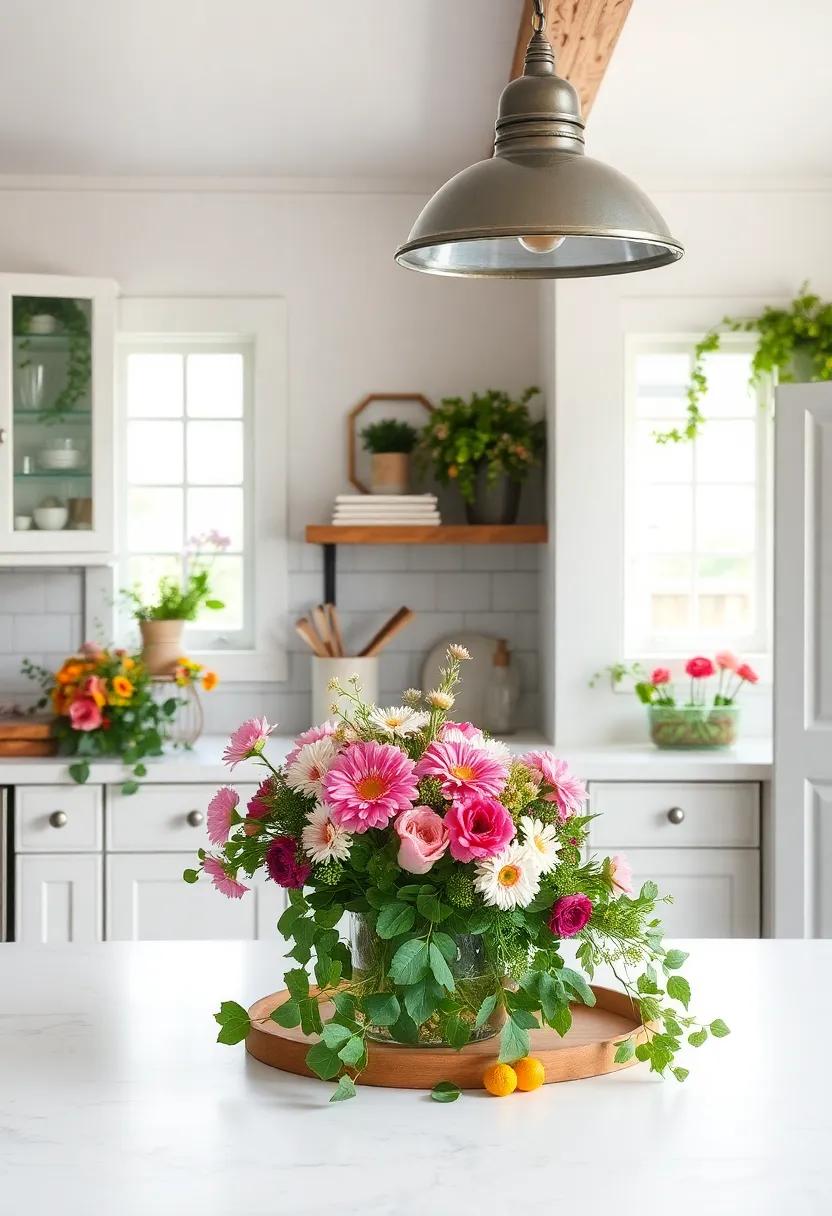
Incorporating seasonal blooms into your farmhouse kitchen decor is an enchanting way to infuse color, vibrancy, and a touch of nature into your daily cooking space. Begin by selecting blooms that reflect the current season; for example, opt for sunflowers in late summer or daffodils in spring. Arrange these fresh flowers in rustic vases or mason jars,blending them seamlessly with herbs like basil or rosemary to enhance the aesthetic while adding a delightful fragrance. To further elevate the décor, consider adorning windowsills or countertops with small potted plants, creating a livelier and more inviting atmosphere.
Another creative strategy is to utilize a color palette that complements your seasonal blooms. For instance, if you’re showcasing vibrant tulips, pairing them with soft yellow or cream-colored kitchen textiles can create a cohesive look.Here are some tips for maintaining this natural charm throughout the year:
- Switch arrangements: Change floral displays to align with the season.
- Mix textures: Combine soft flowers with the ruggedness of wooden trays or woven baskets.
- Incorporate greenery: Use lush foliage to accentuate floral hues and add depth.
By thoughtfully integrating seasonal blooms, you can create a kitchen environment that evolves beautifully with the rhythm of nature. For more inspiration on utilizing flowers in decor, check out Better Homes & Gardens.
The Aesthetic Appeal of Wooden Planters in Farmhouse Design

When it comes to farmhouse design, the warmth and charm of wooden planters cannot be overstated. they seamlessly blend with the rustic aesthetics, providing an inviting atmosphere that echoes the beauty of nature. The earthy tones and textures of wood bring a sense of grounding to any kitchen, creating a perfect backdrop for vibrant greenery. Wooden planters not only enhance the visual appeal but also add versatility, allowing you to change up your floral arrangements or herbs as the seasons shift. Consider incorporating various sizes and shapes to create a dynamic display that draws the eye and adds depth to your space.
Wooden planters can be complemented with thoughtful accessories that enhance their charm. Here are a few ideas to style your planters:
- Mix and Match: Use planters of different woods or finishes for an eclectic, layered look.
- Natural Textiles: Surround your planters with cotton or burlap runners to tie in rustic elements.
- Functional Decor: Incorporate small gardening tools or seed packets for an added functional touch.
By choosing the right plants and styles, you can create a vibrant oasis that encapsulates the essence of farmhouse living. For more inspiration on transforming your space with natural elements,visit Decor flat for creative ideas.
Creating a Window Sill Garden to Bring the Outdoors In
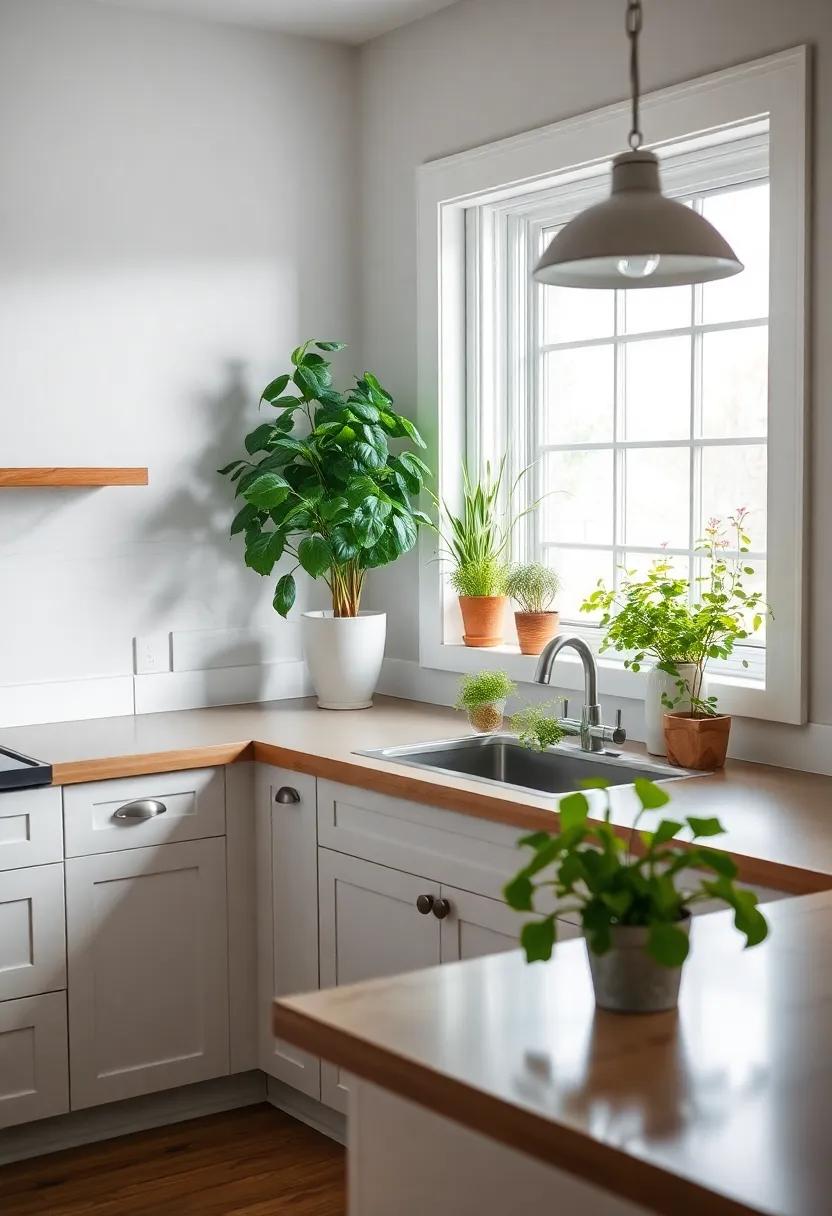
Creating a window sill garden offers an enchanting way to merge your kitchen with the beauty of nature, transforming an ordinary space into a vibrant oasis. Begin by selecting pots that resonate with the farmhouse aesthetic—think rustic ceramic or reclaimed wood containers that add charm and character. Choose a variety of plants that thrive in indoor conditions, such as:
- Herbs: Basil, mint, and rosemary not only enhance your dishes but create a delightful aroma.
- Succulents: These resilient plants add a touch of color and require minimal maintenance.
- Flowering plants: Consider African violets or geraniums to infuse color and cheer in your kitchen.
To further elevate your window sill garden, ensure you use unique and visually appealing setups. Layer your plants in varying heights and textures to create depth and interest. Use a combination of hanging pots and ledges to maximize space, and introduce small decorative items such as stones or candle holders to add personality.Consult resources like Gardening Know How for detailed care tips to keep your greenery thriving. You can also use a simple watering schedule template:
| Plant | Watering Frequency |
|---|---|
| Basil | Every 5-7 days |
| Succulents | Every 2-3 weeks |
| African Violet | Every 1-2 weeks |
The Benefits of using Air Plants for Low-Fuss Greenery
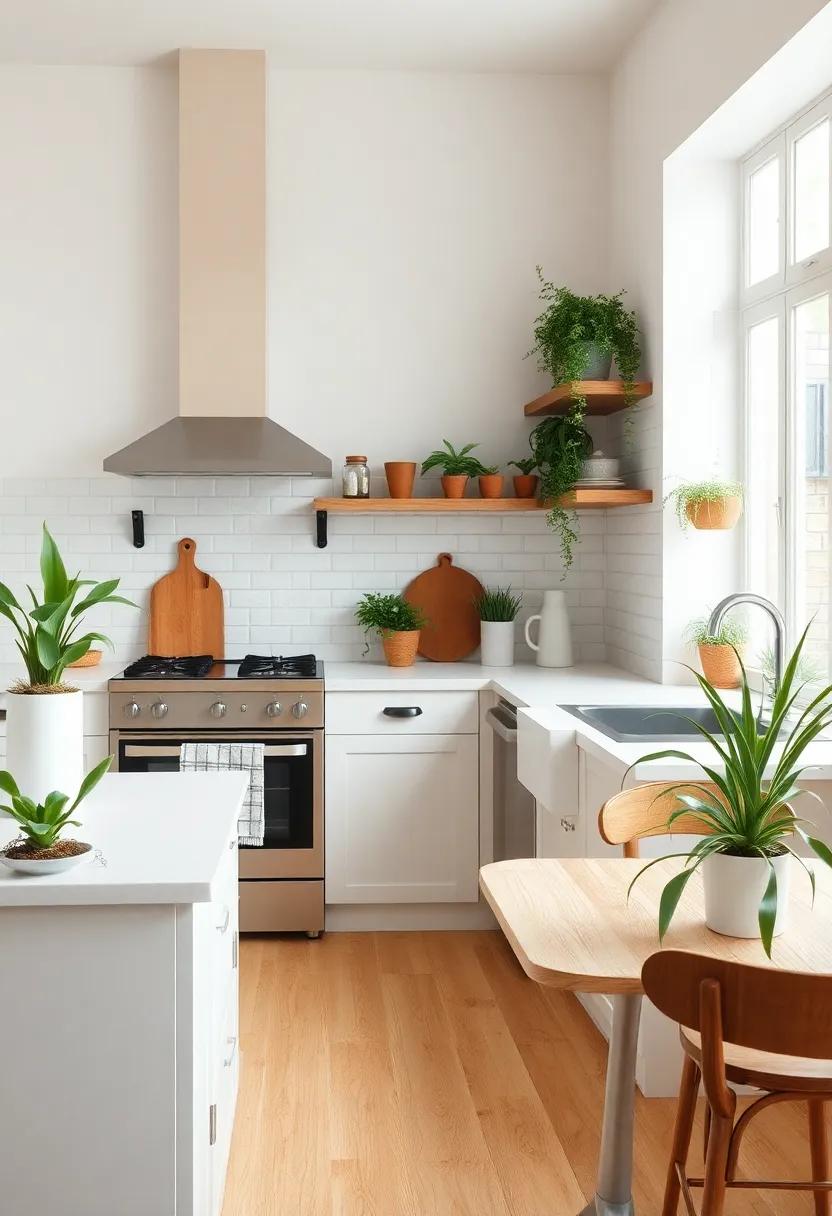
Air plants, or Tillandsia, are the epitome of low-maintenance greenery, making them ideal for a bustling farmhouse kitchen environment. These unique plants thrive without soil,deriving their nutrients from the air and rain,allowing you to focus on cooking and entertaining rather than plant care. here are some key advantages of incorporating air plants into your kitchen décor:
- Minimal Watering: With their simple watering needs—typically onc a week with a quick soak—air plants effortlessly fit into a busy lifestyle.
- Versatile Displays: Able to flourish in various setups, they can be mounted on walls, placed in glass terrariums, or even arranged within a charmingly rustic dish.
- Clean Air contribution: These plants help purify the air by filtering out toxins, promoting a healthier space while adding a touch of natural beauty.
Furthermore, air plants offer a delightful way to infuse personality into your kitchen with their diverse shapes and sizes. Their aesthetic versatility allows you to create eye-catching arrangements that complement your farmhouse style. Check out this simple table showcasing popular air plant varieties you might consider adding to your space:
| Air Plant Variety | Size | Light preferences |
|---|---|---|
| Tillandsia xerographica | Large | Bright, indirect light |
| tillandsia ionantha | Small | Indirect light |
| Tillandsia usneoides | Medium | Bright, indirect light |
By carefully choosing a selection of air plants and displaying them creatively, you can create an inviting atmosphere that enhances the warmth of your farmhouse kitchen. If you seek more facts on caring for these resilient plants, consult Plant Care Today for expert tips and advice.
crafting Personalized Terrariums as Centerpiece Masterpieces
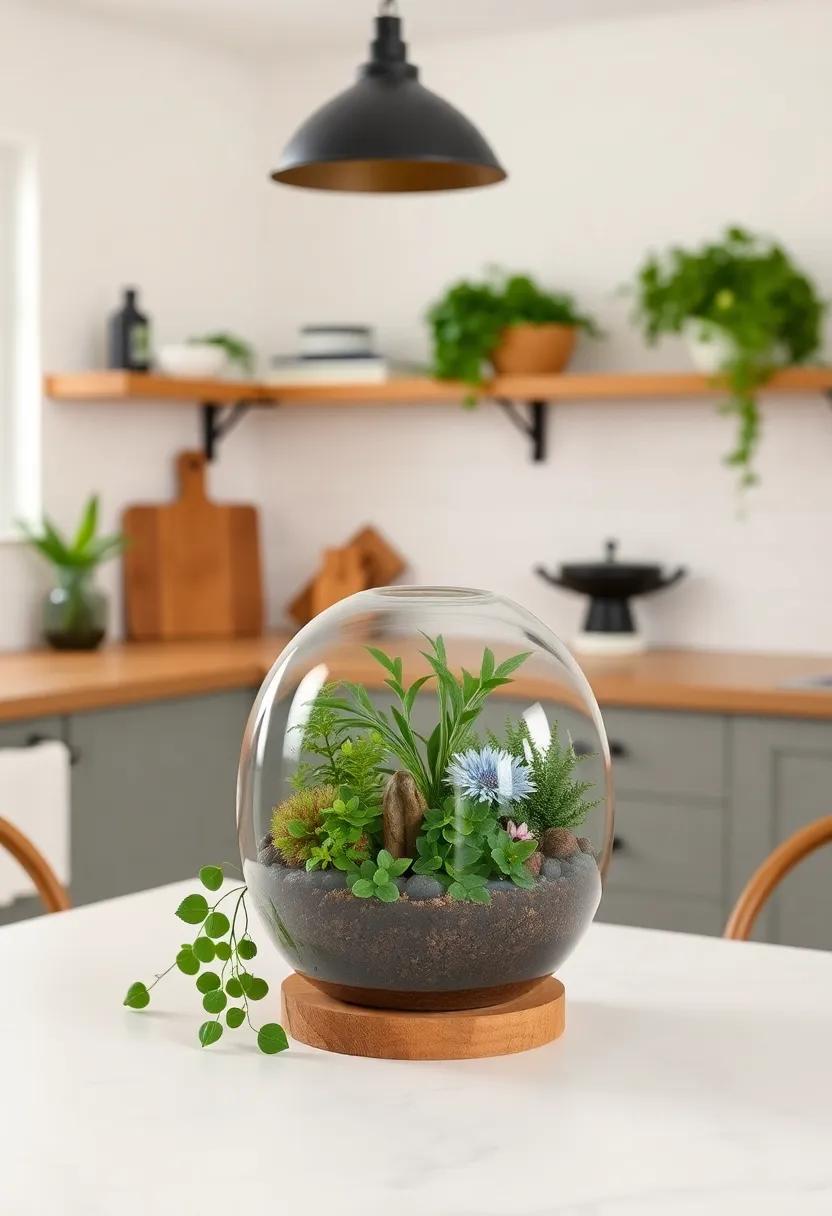
Creating personalized terrariums not only brings an enchanting touch to your farmhouse kitchen but also serves as a delightful reflection of your unique style. Start by selecting a glass container; consider using different shapes and sizes such as round globes, hexagonal boxes, or classic jars. This will set the stage for a stunning centerpiece. Once you have your vessel, gather materials like small pebbles, activated charcoal, and potting soil to create a healthy environment for your plants. You might choose low-maintenance succulents or vibrant ferns,allowing you to craft a miniature ecosystem perfectly suited for the rustic charm of your kitchen.
To enhance the visual appeal of your terrarium, think about incorporating decorative elements such as miniature figurines, rocks, or colorful sand. The layering of these items not only offers an aesthetic appeal but also plays with the texture and color dynamics. Arrange the plants creatively to create levels, ensuring taller varieties are positioned towards the back and shorter ones in the foreground for balance. For inspiration and helpful tips on terrarium crafting, visit The Kitchn. With just a little creativity, your handmade terrarium will become a captivating centerpiece that invites guests to immerse themselves in the beauty of nature right in your kitchen.
Exploring the Benefits of companion Planting in Indoor Spaces
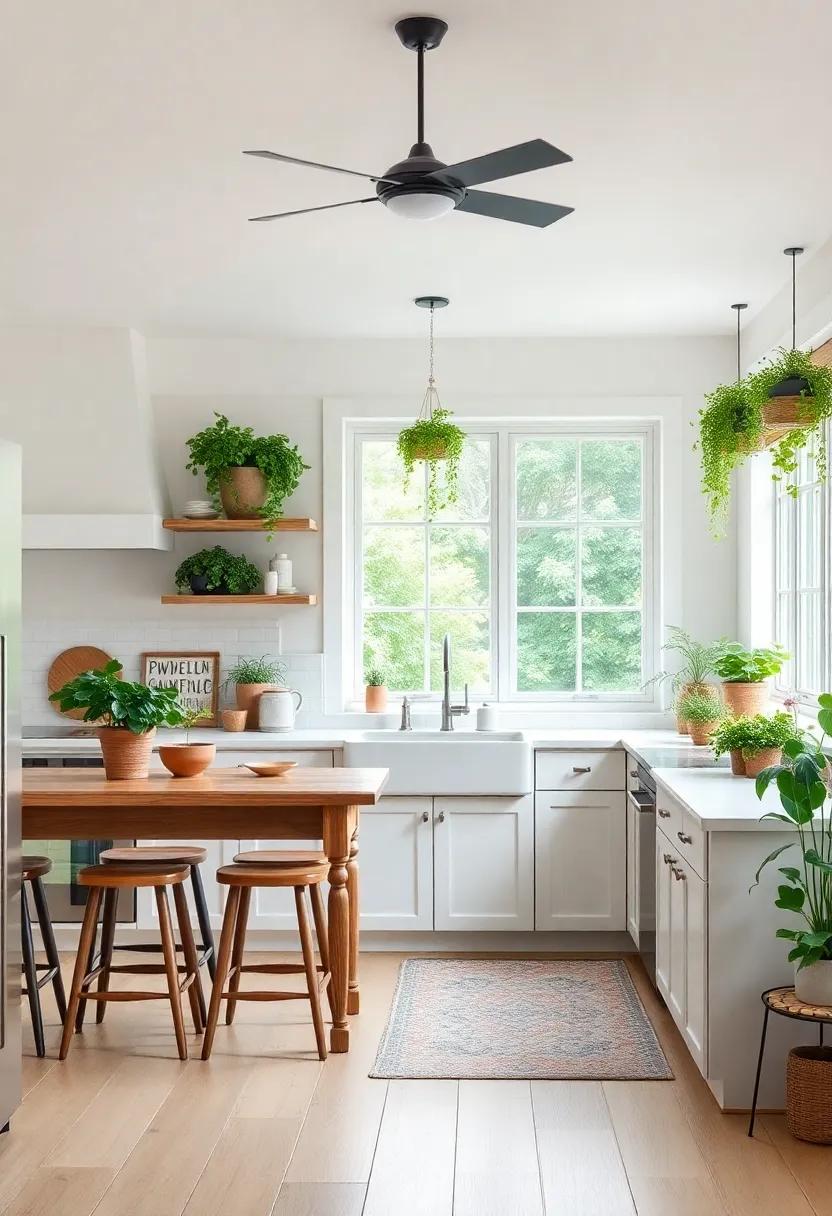
In the embrace of a rustic farmhouse kitchen, the art of companion planting can truly flourish, bringing forth a vibrant tapestry of life that enhances both aesthetics and functionality. Pairing plants wisely can lead to a host of benefits, enriching the indoor garden experience. Basil,for instance,thrives alongside tomatoes,known to deter pests while enhancing flavor,while marigolds make fantastic partners for nearly any herb or vegetable by repelling undesirable insects. As you curate your indoor greenery, consider arranging your plants based on their compatibility, fostering a harmonious environment that not only highlights their beauty but also cultivates a thriving ecosystem.
Moreover, the practise of companion planting in indoor spaces can significantly contribute to improved air quality and plant health. By integrating plants like spider plants and peace lilies,you can elevate the ambiance of your kitchen while benefiting from their air-purifying properties. Here’s a quick overview of compelling companion plant pairings that work well in these lush indoor arrangements:
| Plant Pairing | Benefits |
|---|---|
| Basil & Tomatoes | Repels pests, enhances flavor |
| Marigolds & Herbs | Deters insects, boosts growth |
| Spider Plant & peace Lily | Air purification, humidity regulation |
Implementing these combinations not only shapes a visually pleasing space but also encourages a sustainable approach to gardening in your indoor environment. With careful selection and arrangement, each plant can support the others in thriving health, resulting in a bountiful display of nature that is both beautiful and beneficial. For more extensive insights into companion planting, you can explore Gardening Know How.
Accent Walls Covered in Nature: Ideas for a Lush Look

Your farmhouse kitchen can come alive with creative accent walls that embrace the beauty of nature. One idea to consider is a living wall adorned with indoor plants. Using a mix of cascading vines and vibrant leafy greens, you can infuse freshness and texture into your cooking space. Select plants that thrive in kitchen light conditions, such as ferns and pothos, and arrange them in vertical planters for an easy-to-maintain jungle vibe.
Another approach is to utilize wallpapers or decals featuring nature-inspired patterns. Think botanical prints showcasing lush foliage or images of serene forests that can draw the eye and elevate your kitchen’s aesthetic. Complement these designs with wooden or wicker accents to maintain an organic feel throughout the space. To find inspiration and explore different plant varieties, visit Better Homes & Gardens for ideas that capture the essence of lush greenery.
Transforming Kitchen Shelves with Botanical Displays
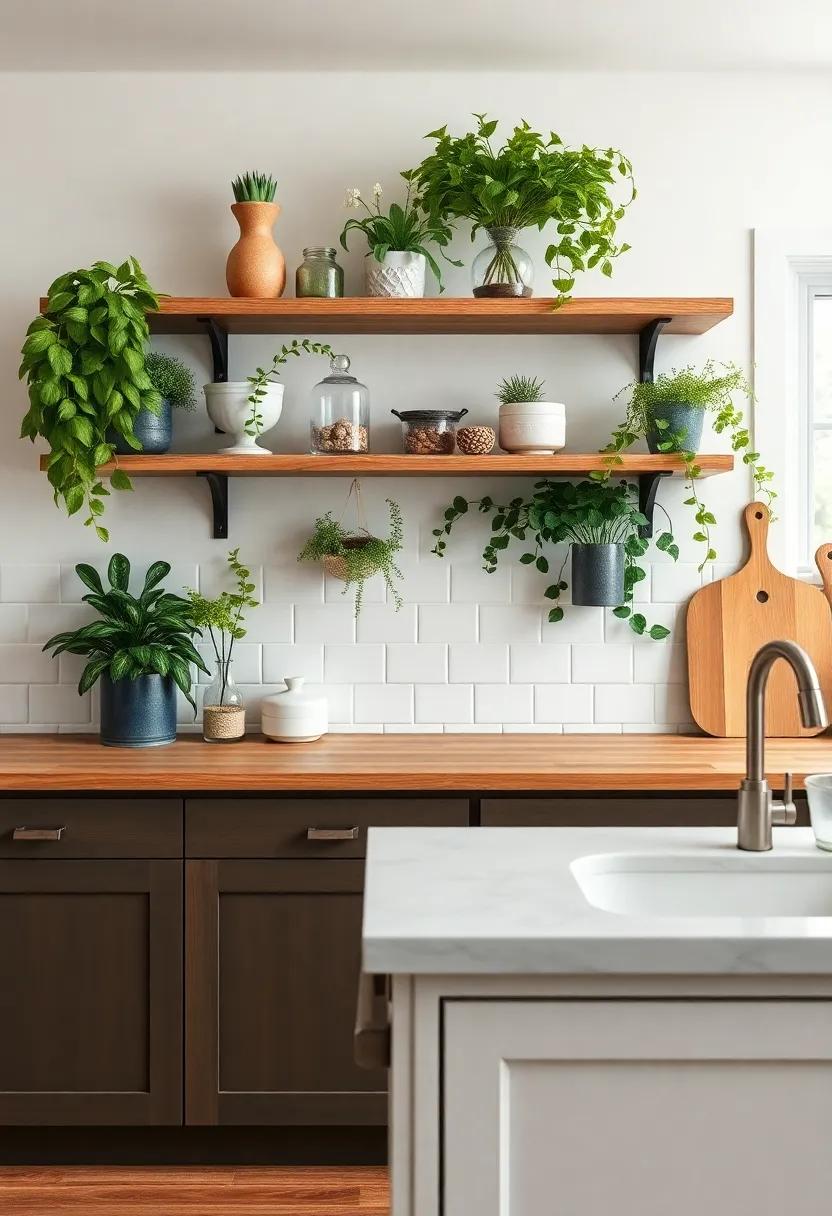
Incorporating botanical displays into your kitchen shelves can seamlessly blend the beauty of nature with the functionality of your farmhouse aesthetic. A collection of herbs, potted plants, and vibrant flowers not only enhances the visual appeal but also offers a delightful sensory experience. Consider using a variety of plants such as:
- Basil – Perfect for culinary uses and fragrant aromas.
- Thyme – A hardy herb that thrives indoors and adds greenery.
- Spider plants – Easy to care for, they purify the air and bring life to any space.
- Succulents - Low maintenance and available in countless varieties, ideal for smaller shelves.
To create an eye-catching arrangement, consider employing various heights and textures. Group taller plants towards the back and shorter ones at the front,crafting a layered look that draws the eye. Utilizing rustic pots or repurposed containers can further enhance the farmhouse charm of your kitchen. For that extra touch of personalization, label your herbs with charming tags, and think about integrating a few small, decorative elements like jars or vintage cookbooks to complete the aesthetic. Explore more tips for indoor gardening at Gardeners.com for inspiration that aligns with your vision.
Repurposing Vintage containers for a Unique Planting Experience
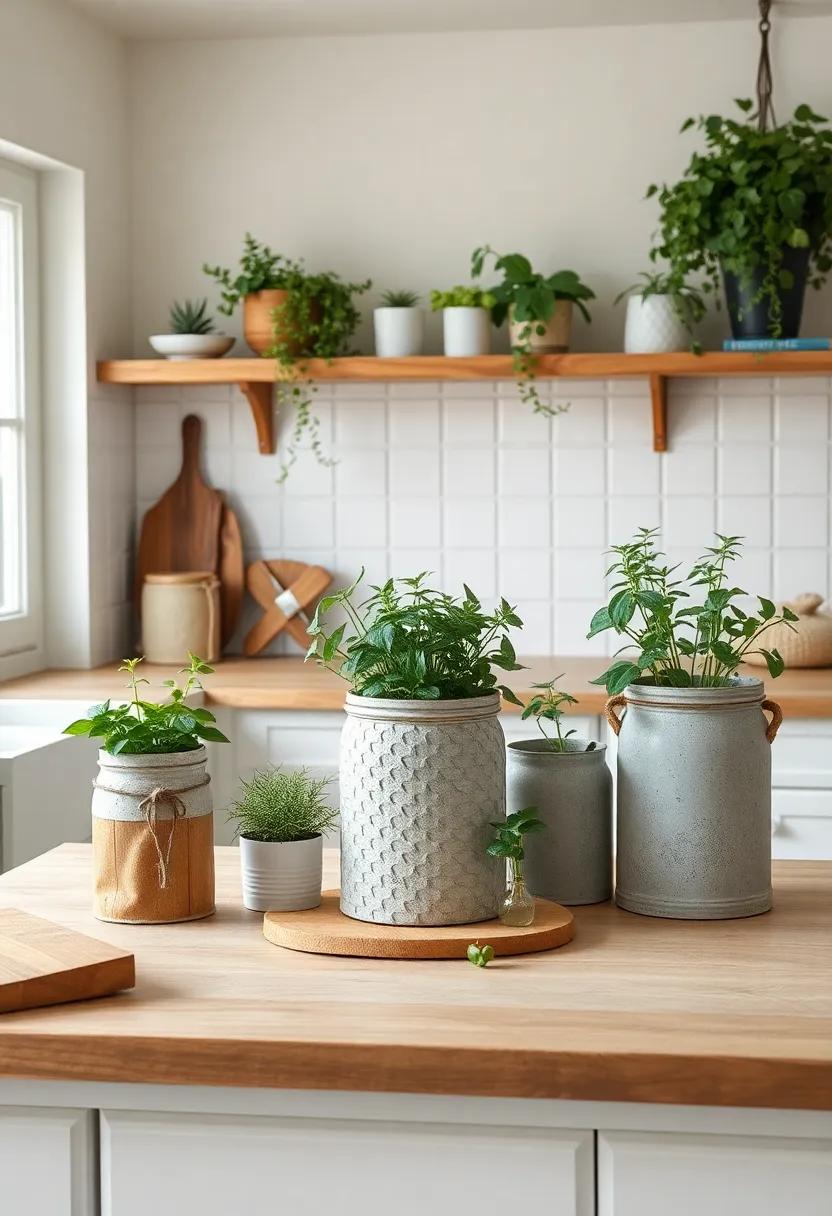
Transform your vintage containers into stunning planters that breathe life into your farmhouse kitchen. From old teapots to wooden crates, these unique items can add character and charm while offering a delightful home for your greenery.Consider the following ideas for repurposing:
- Teacups and Saucers: Perfect for succulents and small herbs. These delicate pieces can be arranged on your windowsill for a quaint display.
- Wooden Crates: Use a crate to create a vertical garden. Stack them against a wall and plant flowers or herbs in each tier.
- Old Shoe or Boot: Ideal for a quirky touch, these can accommodate trailing plants for an unexpected twist.
- Glass Jars: Use them as mini terrariums. Layer with pebbles, charcoal, and soil for a simple DIY project.
When it comes to selecting plants, the right combination can enhance not just the aesthetic but also the functionality of your kitchen space. Consider creating a small herb garden to grow fresh basil, thyme, and rosemary right at your fingertips. If space allows, you could also utilize larger containers to house vibrant flowers like geraniums or petunias, giving your kitchen a burst of color:
| Container Type | Best plants |
|---|---|
| Teapot | succulents |
| Wooden Crate | Herbs |
| Glass Jar | Mini Cacti |
For more inspiration on how to creatively reuse items around your home, check out Pinterest.
Inspiring Ideas for Nature-Themed Wall Art in Your Kitchen
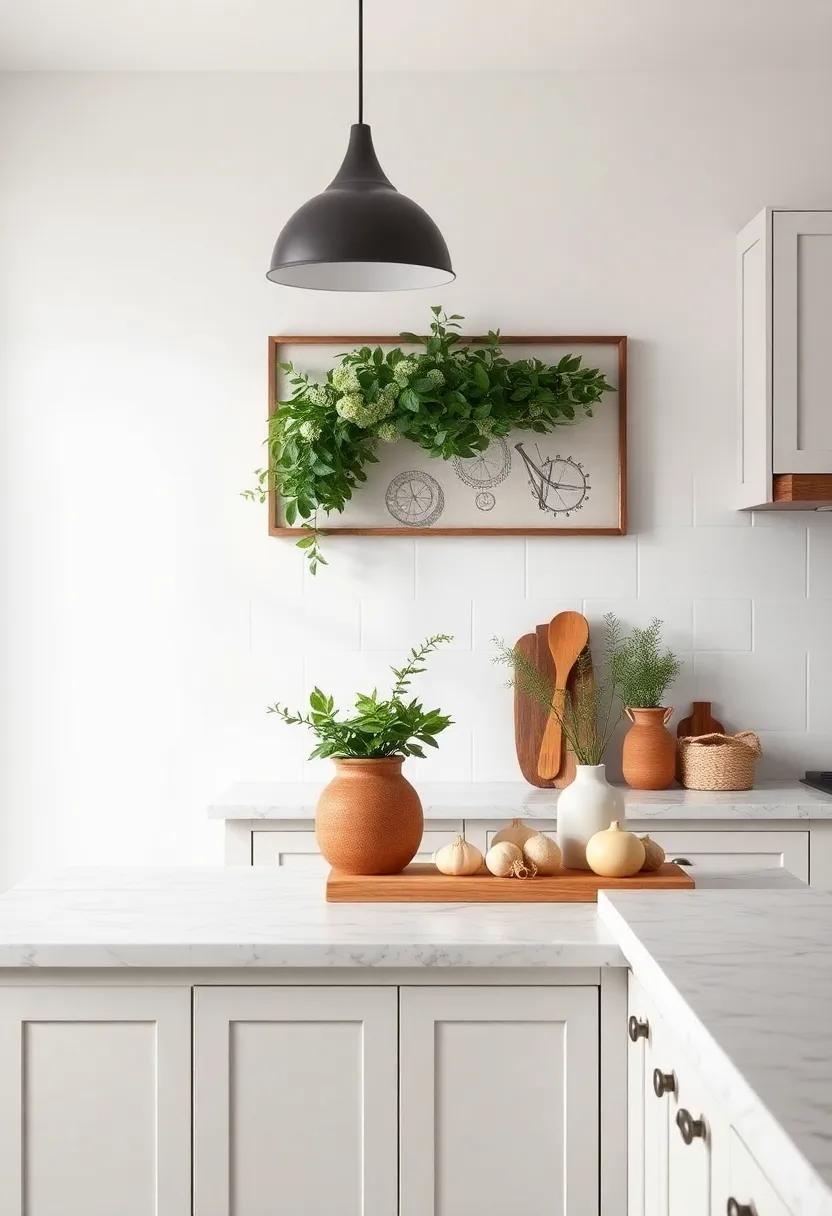
Add a fresh touch to your kitchen with nature-themed wall art that celebrates the lush beauty surrounding us. Consider displaying framed botanical prints that showcase intricate leaf patterns or vibrant floral designs, bringing the outdoors inside. A collection of vintage seed packets can serve as an appealing gallery wall, sparking conversations while adding a nostalgic charm. To enhance the holistic vibe,hang woven macramé hangers with small potted herbs or succulents. This not only complements the art but also infuses your kitchen with life and fragrance.
Texture can play a notable role in elevating nature-inspired aesthetics.Warm wooden shelves can act as canvases for displaying nature-inspired ceramics or handcrafted pottery, reflecting earthy tones and the organic forms found in nature.If you prefer a more modern touch, consider a shadow box frame filled with dried flowers or twigs, creating depth and dimension on your walls. Mix and match these elements for a collage effect that can be easily updated with the seasons. For additional inspiration, check out freespiritgallery.com for a treasure trove of ideas and artworks that embrace the beauty of nature.
The Way Forward
As we conclude our exploration of transforming your farmhouse kitchen into a vibrant sanctuary of nature, it’s clear that embracing greenery can redefine the heart of your home. These lush additions not only enhance the aesthetic appeal but also breathe life and vitality into your cooking space. From herb gardens flourishing on sunny windowsills to lush potted plants offering a serene ambiance, the possibilities are as boundless as nature itself.
Remember, each stem and leaf contributes to a story—one that unfolds with the seasons and your own culinary adventures. So, whether you prefer the fresh scent of basil, the gentle sway of hanging ferns, or the dynamic colors of flowering plants, let your kitchen reflect your unique relationship with nature.
As you embark on this journey, consider how these green companions can inspire creativity, encourage sustainable practices, and foster a deeper connection to the earth. In cultivating such an environment,you’re not just beautifying your home; you’re inviting a sense of harmony and well-being that nourishes both body and soul. Here’s to a kitchen that thrives, grows, and flourishes—just like the nature it welcomes inside.
 theFASHIONtamer Where Style Meets Space, Effortlessly
theFASHIONtamer Where Style Meets Space, Effortlessly 


